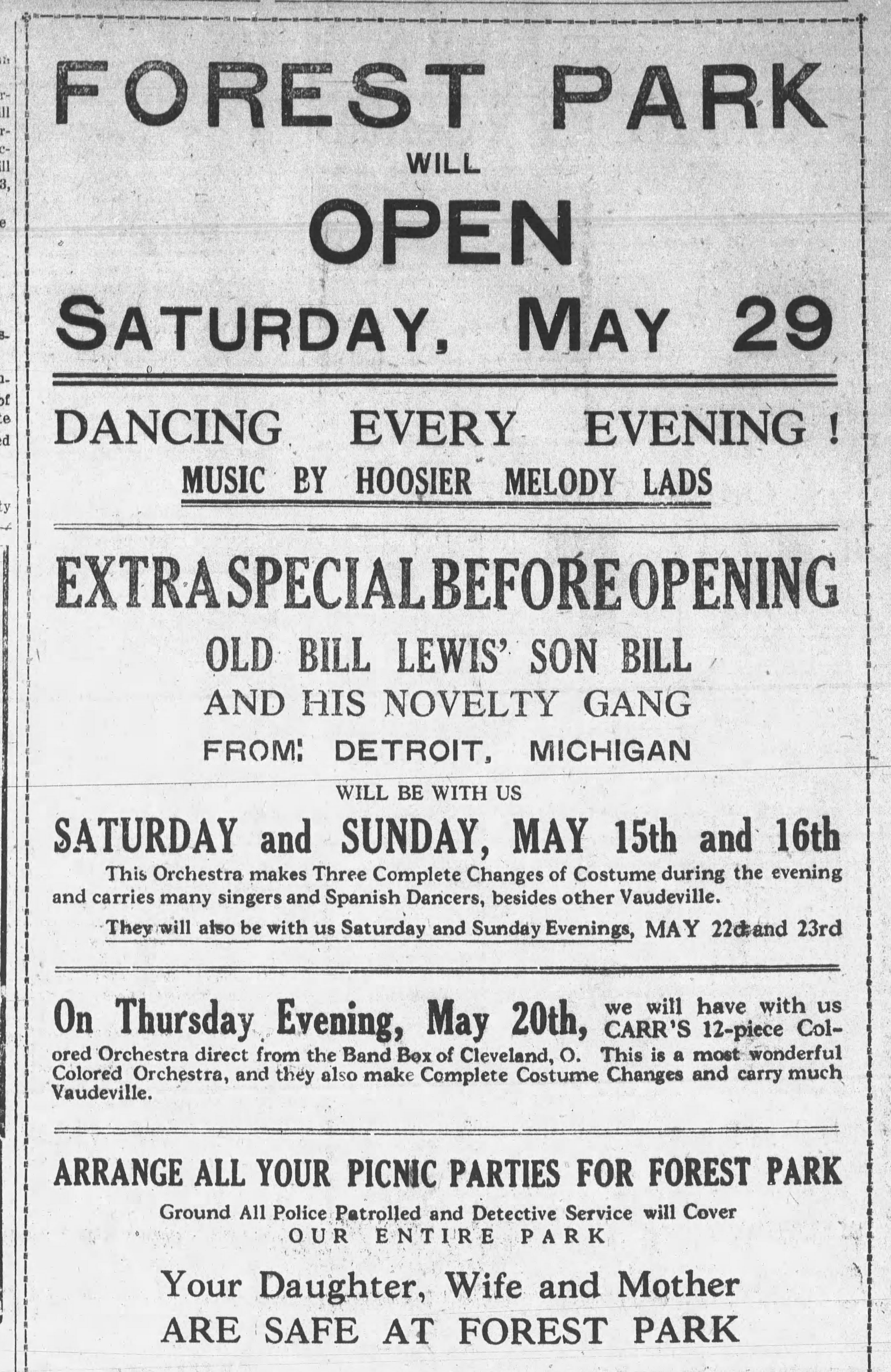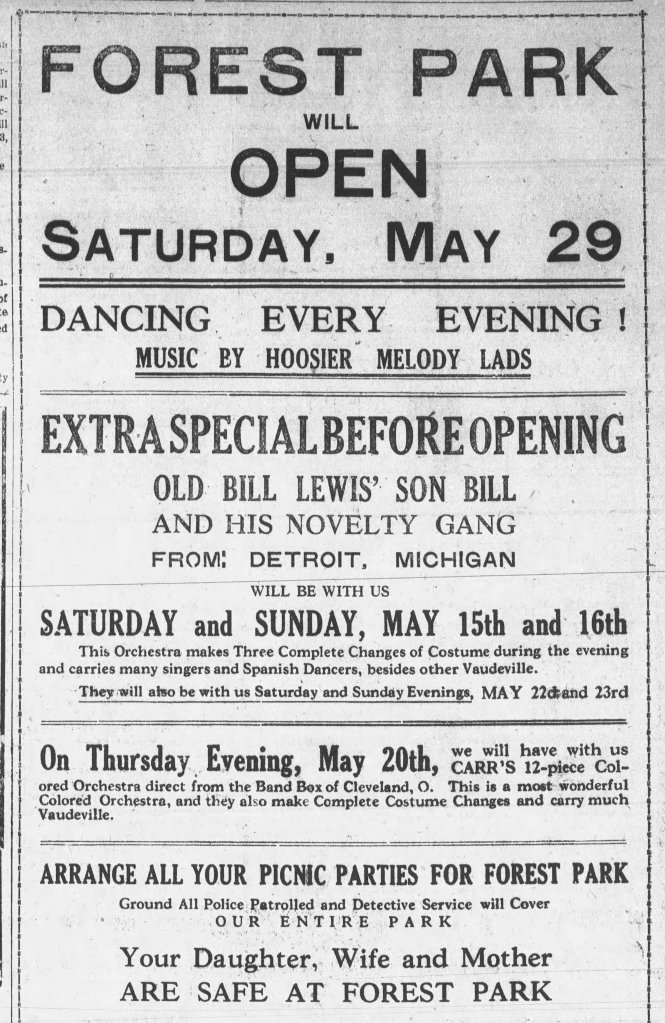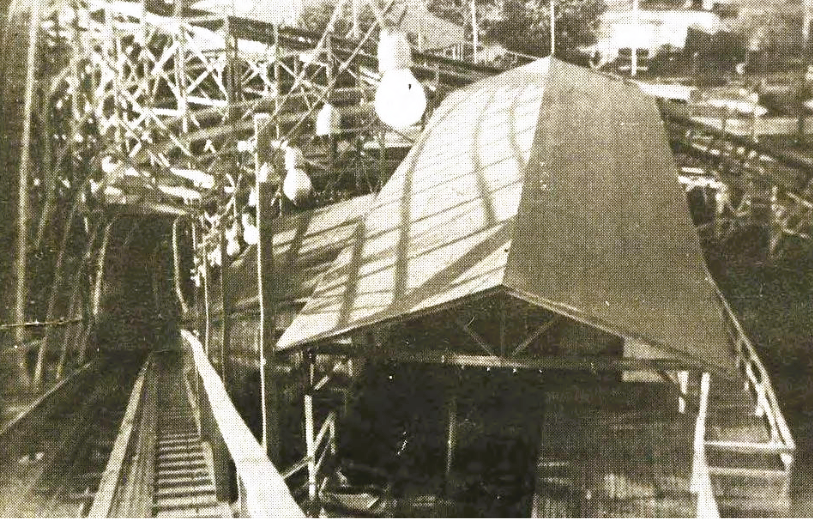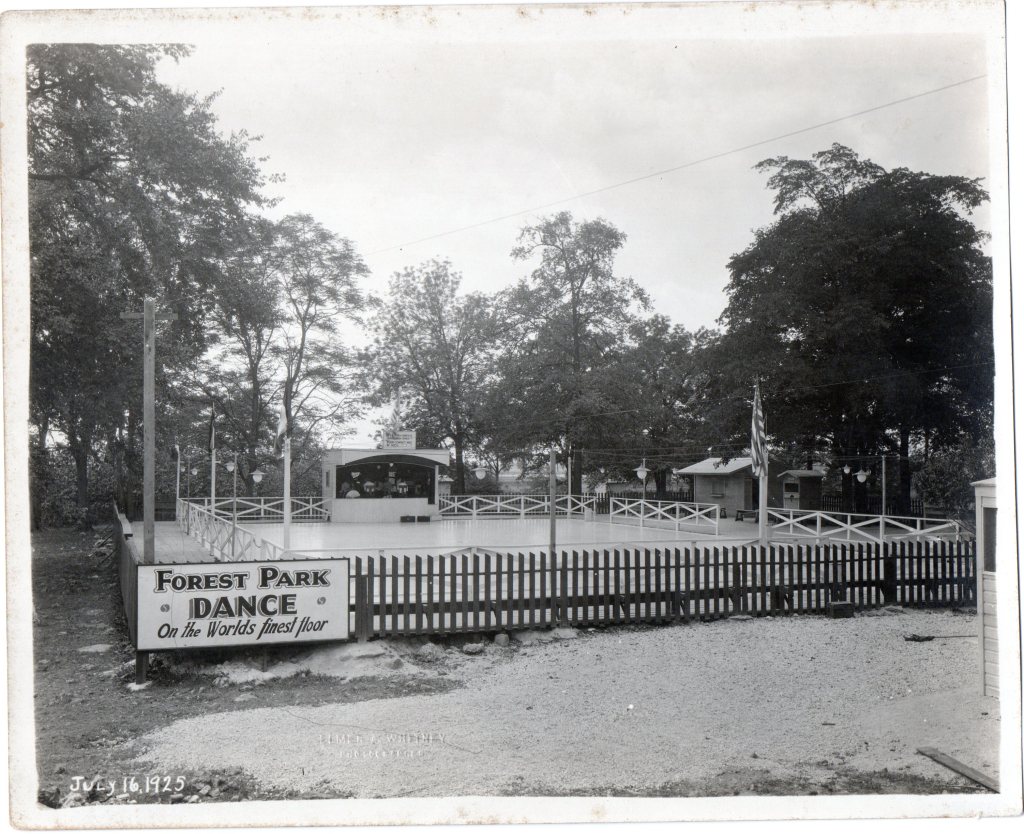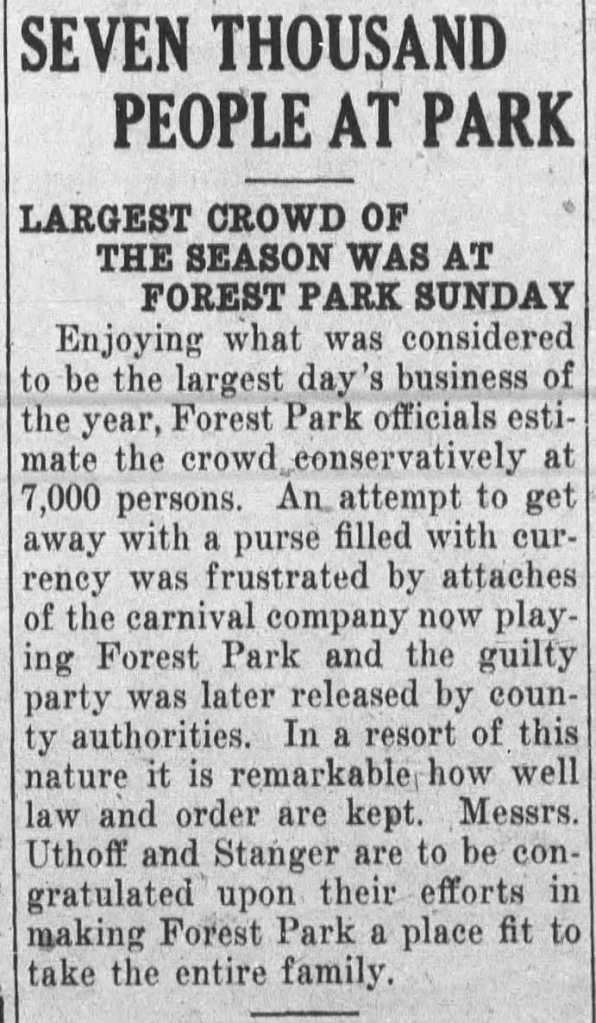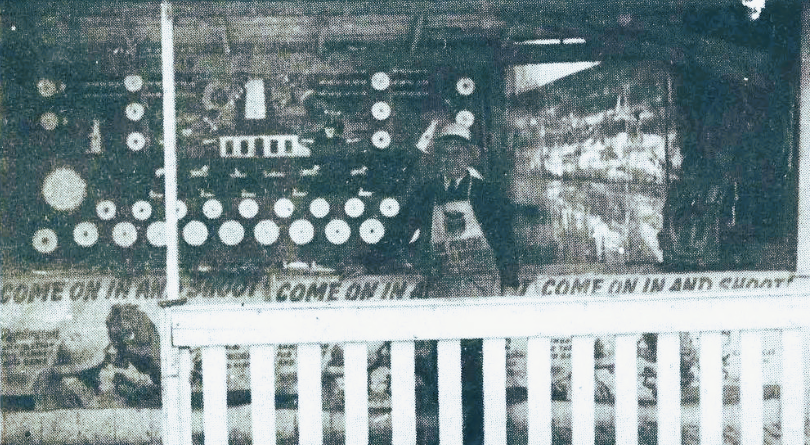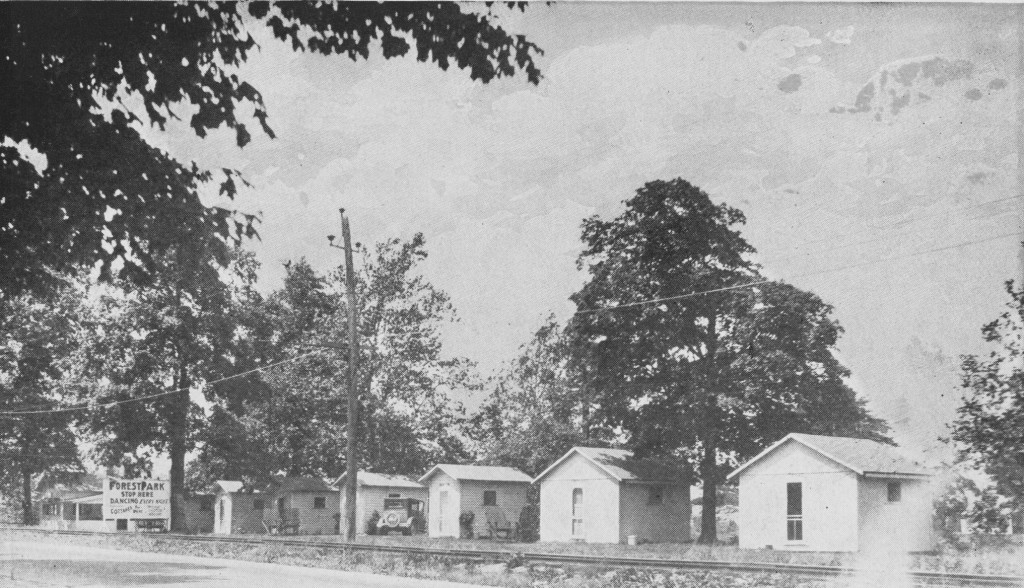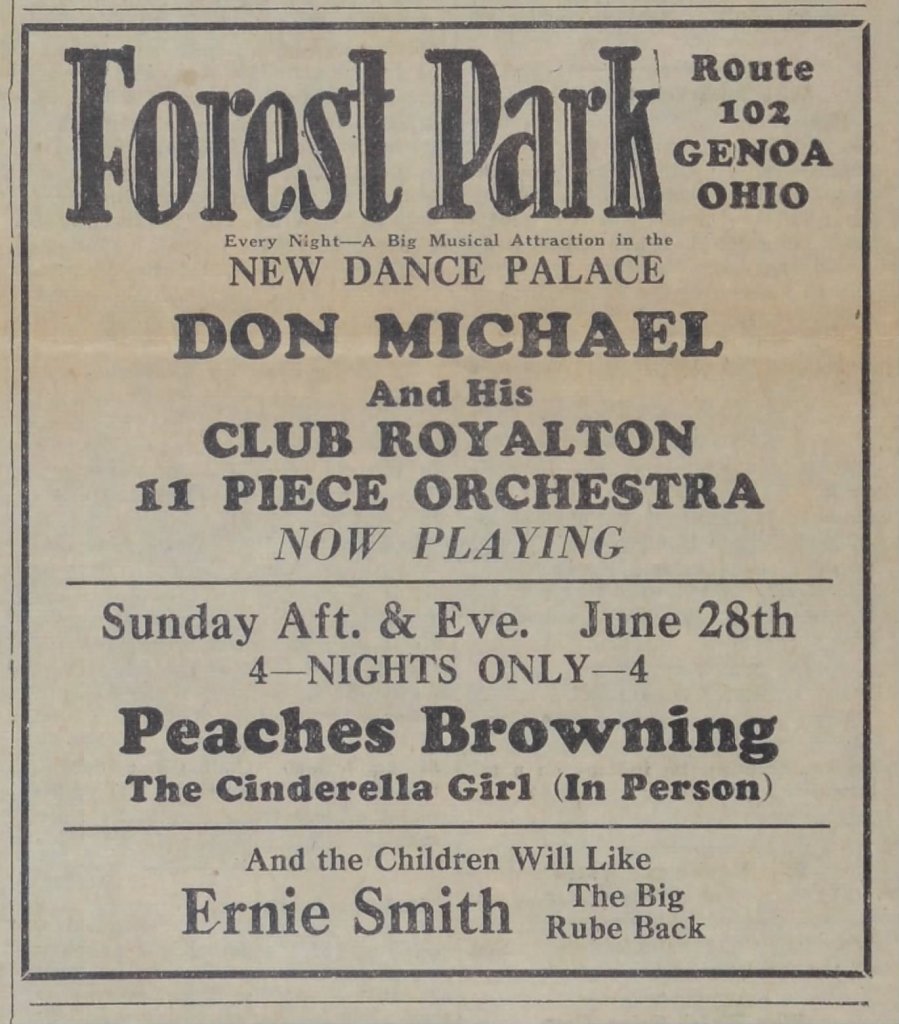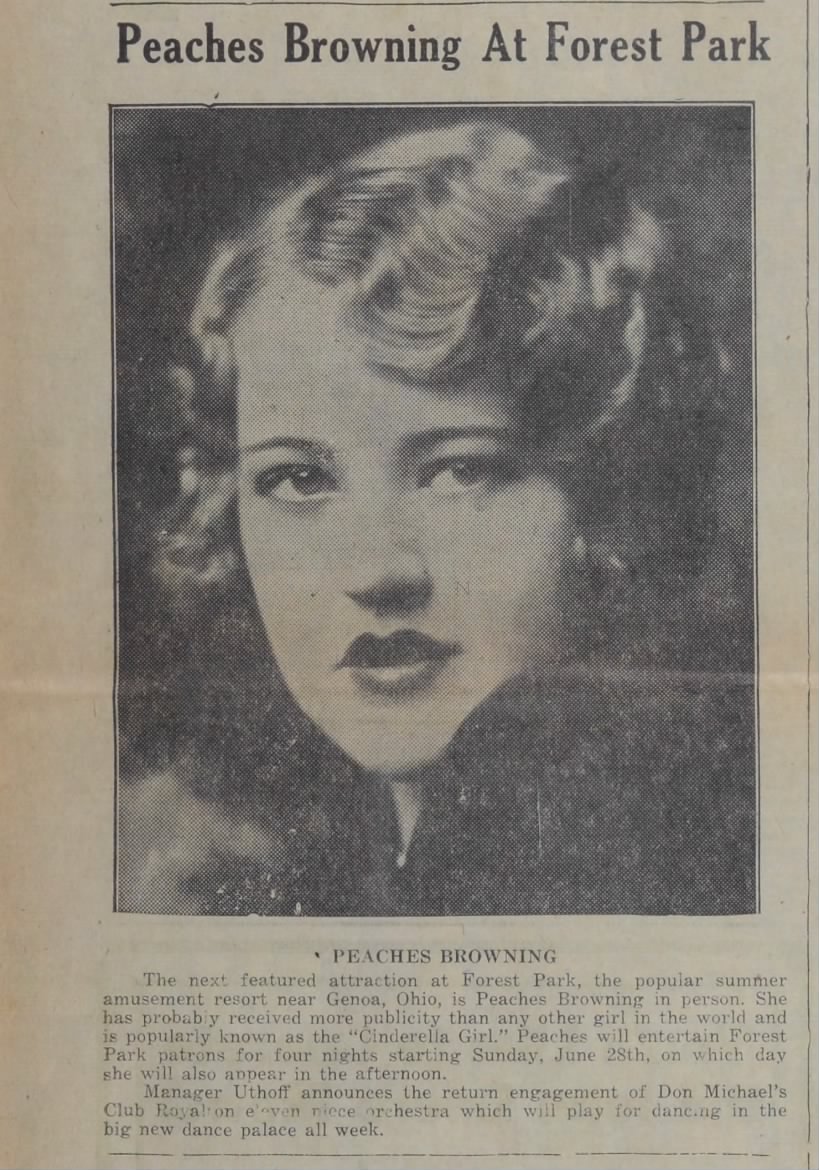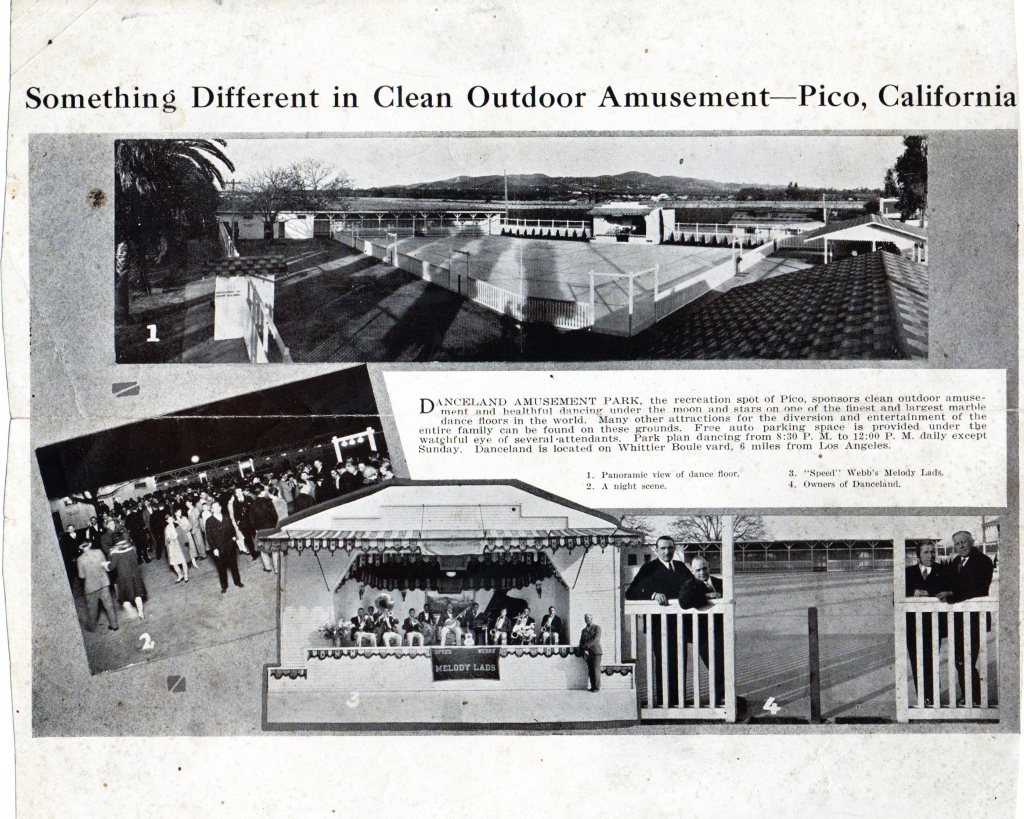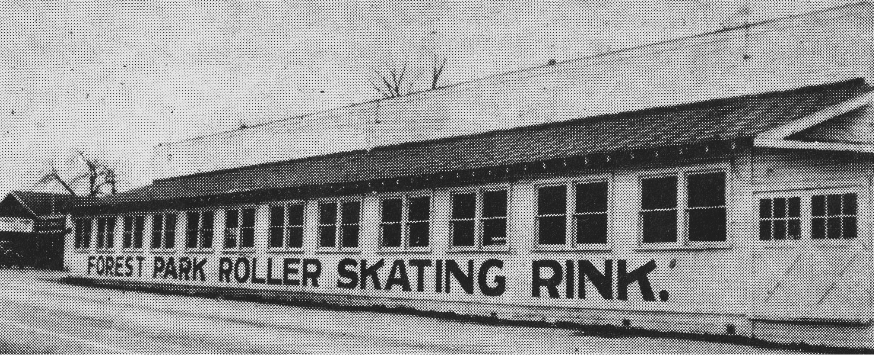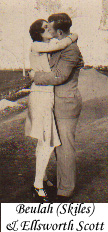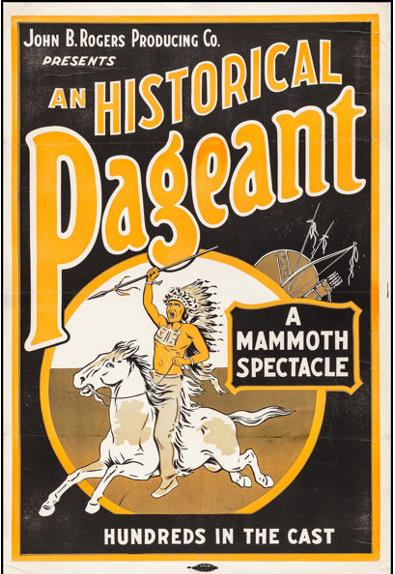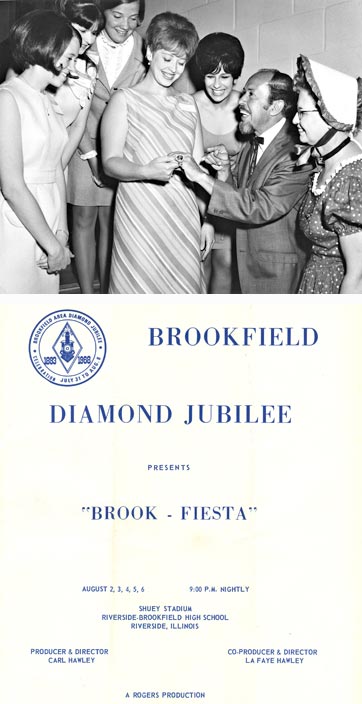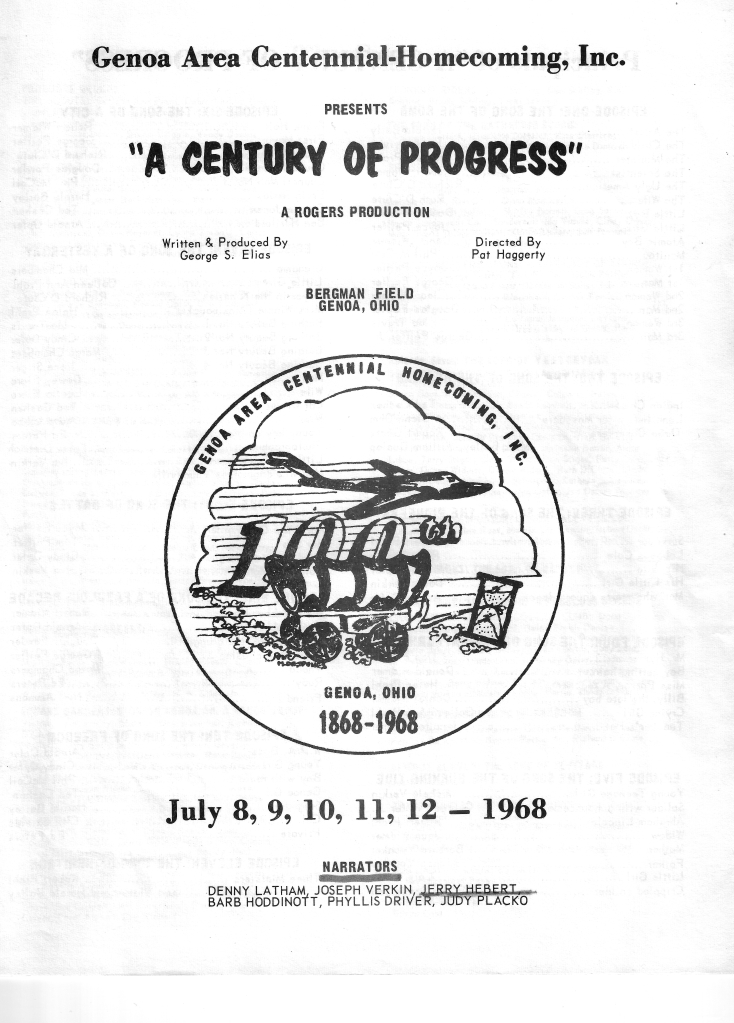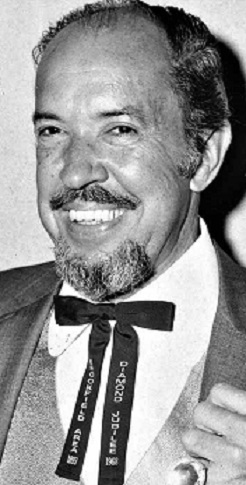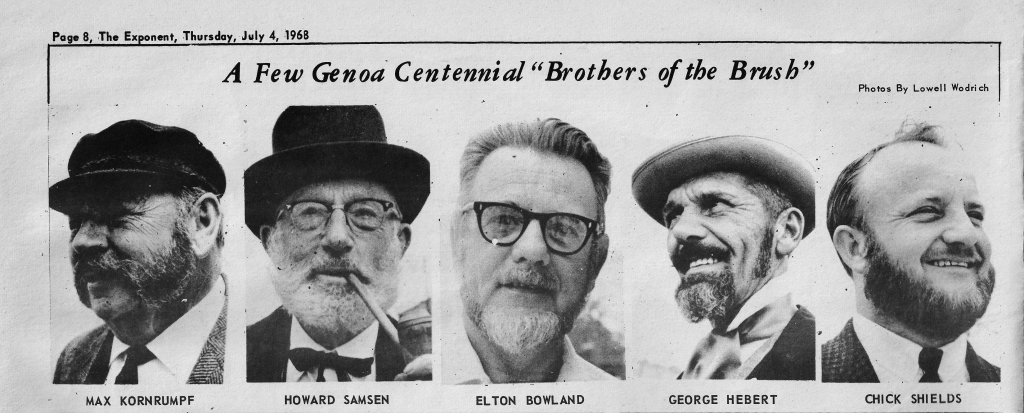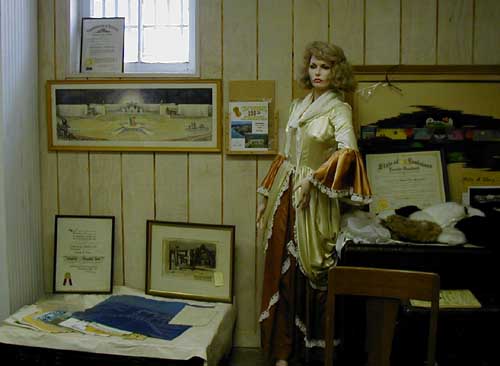The Forgotten Gem of Genoa
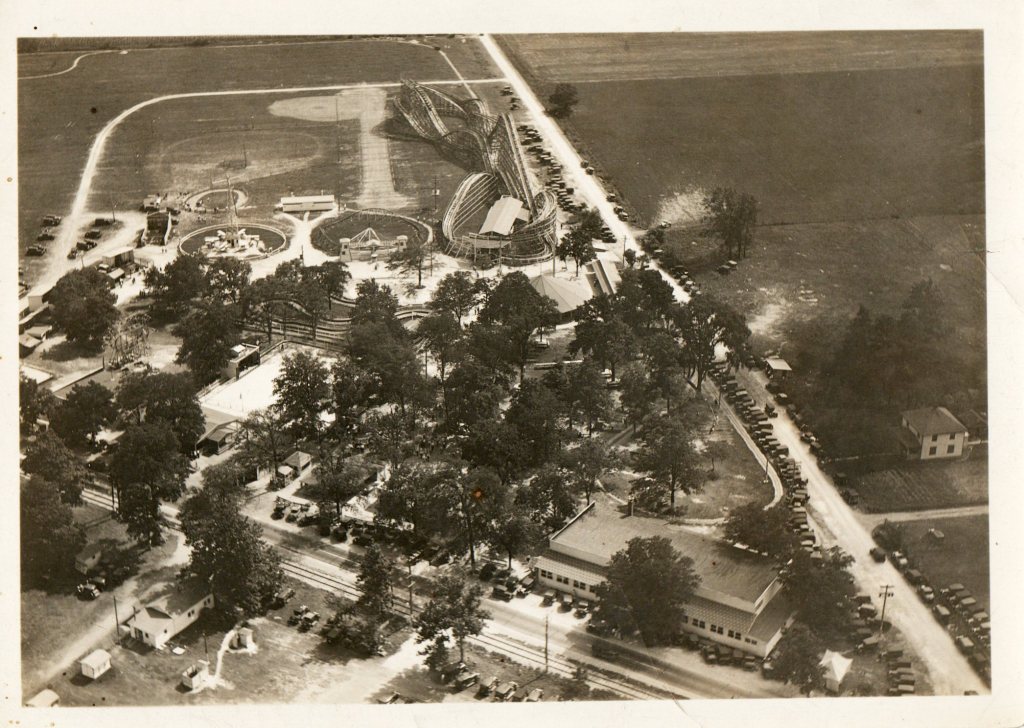
It wasn’t the biggest amusement park in Toledo area history, but it may have been the best. And least that’s how many people from the area thought of it. It was known as Forest Park, opening on Woodville Road, near Genoa , sometime in the mid-1920’s. The park, like many of that prohibition -roaring 20’s era was a promise of good times and fun. One of several such parks around Toledo competing for the attention of those who wanted to a spend a few hours riding the rides, playing the games, dancing to the bands, or maybe lacing up some roller skates to take a few laps around the wooden rink. Forest Park offered a full menu of these features and much more, for several decades, from the 1920’s through the 1940’s. It was “the place to be” every summer, spring and fall, and even in the winter months. The land for the park, at Woodville and Reiman Roads, also known as Hickory Corners, was purchased by businessman Carl Uthoff in the mid-1920’s. Although the exact date of opening day has been lost to time, early Genoa Gazette articles show it was up and running by 1925.
Within a few years, it was it drawing record crowds, and on some days, those crowds were measured in the thousands. Pretty impressive for a park that was miles from the big city population of Toledo. But one of the reasons it prospered was its convenient location along busy state highway(Woodville Road), and adjacent to that roadway, in the 1920 and 30’s, the Lakeshore Electric Interurban train ran several times a day. The stop at Forest Park made the trip from Toledo a short and easy ride for fun seekers from the city, or in the other direction from Fremont or Woodville. And once they arrived, there was a full spectrum of fun things that was boast worthy.
Below is a panel of photos from Margaret Fintel’s family photo album. They show photos of her grand parents Stephen and Peg Huntzinger and her mother, Peggy, astride the carousel animals from the historic Dentzel carousel that is now proudly operating in Burlington North Carolina.
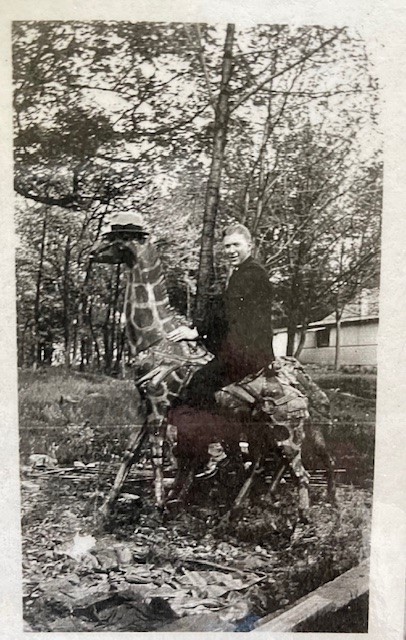
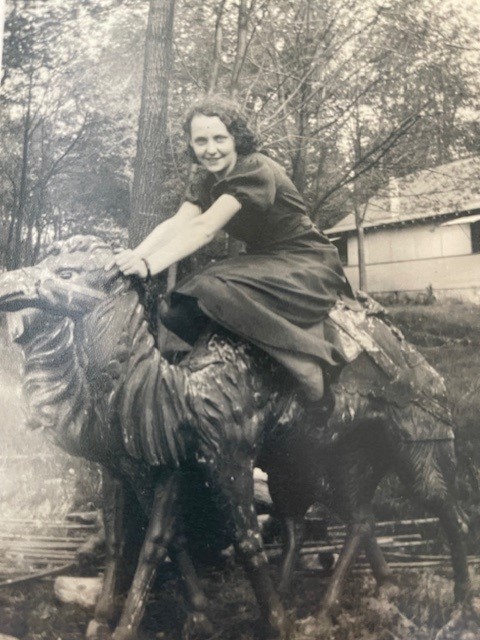
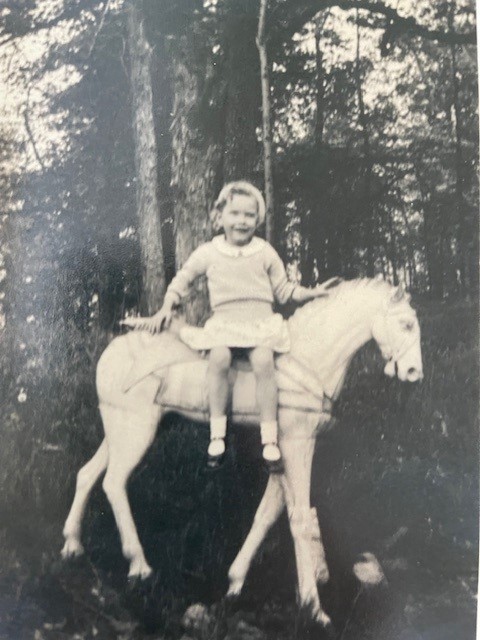
Suprisely, there is not much written about “Bob’s Coaster” or the “Speedway” wooden coaster(below) that was a premier attraction at the park. Speculating from the aerial photo, it was a large and impressive structure and appeared to take riders as high as 50 feet or more at the top before the cars raced down the other side. The builders and the designers appear to be lost to time and the fog of the past. If anyone knows more about its construction and its eventual demise, this writer and others would be grateful to hear from you.
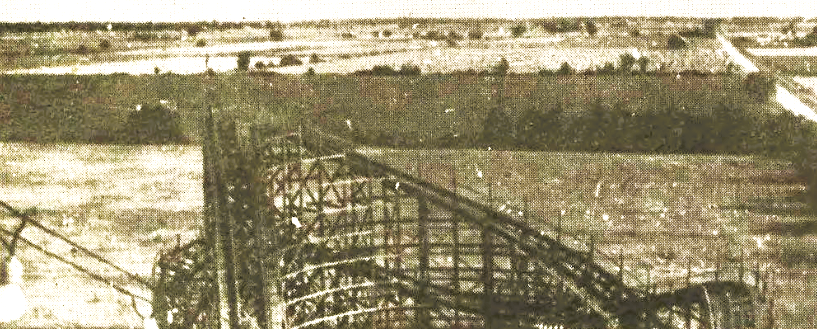
The Speedway Coaster
The park not only had a roller coaster,(The Speedway as it was called), but a (now historic)Dentzel carousel merry-go-round, A Hersell Carousel, dodg-em-cars, a miniature-train ride and even a Ferris wheel. For those seeking more traditional thrills, bowling alley, a movie screen, and a variety of circus acts and performers, including the dare-devils on the high wires and trapeze.
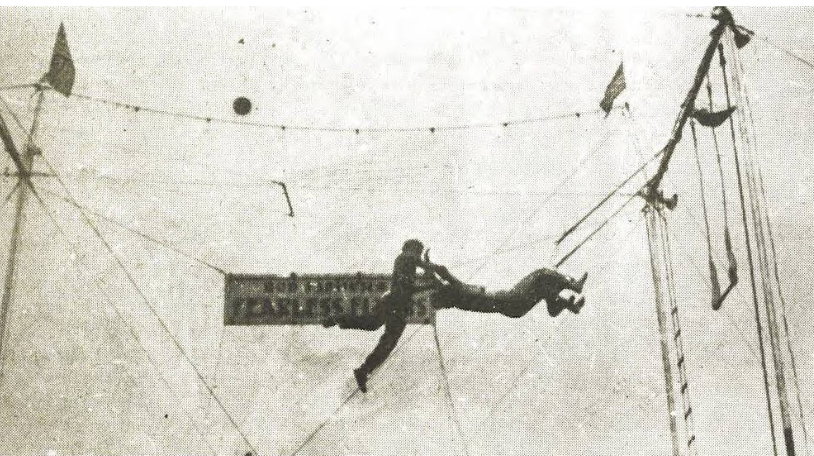
One of the high wire acts that were regularly featured at Forest Park over the decades
Conspicuous at on the highway side of the park was a popular restaurant and a large indoor large roller rink, while a few feet away there was a dance hall with a beautiful marble floor where couples could dance the night away. Owners Carl Uthoff and partner Bill Stanger always booked some top notch dance bands and singers to croon for the crowd and the young lovers.
The outdoor dance floor(right) that was built in the 1920’s. Later an indoor venue was built.
Forest Park was so popular, and packed with amusements, it was a fierce competitor with other parks in the area at the time, including Willow Beach at Point Place or Locust Point near Oak Harbor, or Walbridge Park in Toledo.
It seemed like every year, Carl Uthoff and buisness partner Bill Stanger added new and better offering for the public to enjoy. The midway offered a penny-pitch stand, a shooting gallery, an archery range and Madam Farray, the fortune teller, would tell you for a quarter what the future held. It’s not certain though if she ever foretold the future of Forest Park. If she had, she might have envisioned its eventual demise by the end of the late 1940’s. Times change, and after World War Two, Americans were seeking their entertainment in other ways. The arrival of television kept lots of folks glued to their black and white screens in the comfort of their living rooms. By the late 1940’s, the popularity of the big bands of the 20’s were falling from grace and no longer in vogue. Even the once popular Interurban trains were out of step with the times and the trains were shut down and the tracks taken out. In short, Toledo area families, like many across the nation, had found new opportunities and options for family getaways.
If that wasn’t enough, on many nights, there were fireworks to keep the crowd’s attention . If people wanted to stay the night, on the other side of Woodville road were 25 cottages that could be rented for $1 per night.
Forest Park, like many of these pleasure parks of that era were aging. The once popular wooden roller coaster was condemned and other buildings were also in need of repair. The crowds dwindled and Carl Uthoff, who had been struggling to make a profit during the war years started allowing slot machines and gambling on premises. As a result, the park lost its liquor license. Soon theereafter, he sold the park to new owners. The time had come and time was cruel. By the 1950’s the only remnant of the park still in use was the dance hall building which was used as a auction house for a number of years. The once busy roller rink stood in mute silence along the roadway relegated as a storage locker, eventually surrendering to a ball of flame in 1957. As the decade wore on, the remains of this mecca of fun were mostly broken and lifeless. As many baby boomers of the 50’s and 60’s will attest, a drive-by on Woodville Road revealed only a mere wistful glimpse of what once was. Weeds and nature had mostly reclaimed the property and in 1967, that last remaining building, the big dance hall, also fell to fire and memory.
It should be mentioned that Carl Uthoff and his business partner Bill Stanger also built an entertainment park in Pico California in the 1920’s. The community, now known as Pico Rivera, was in the mid 20’s a rural community wets of Los Angeles thta was growing quickly. Stanger, who lived nearby, must have seen the opportunity, so he and Carl Uthoff of Genoa built what became known as “Danceland” in Pico on Whittier Blvd. As of this wiritng, I am still researching this venue and what ever happened to it. Below are some images and photos of the “Forest Park” of California.
I am have unable, thus far to determine whether anything remains of Danceland in Pico Rivera. Perhaps like with Forest Park, mostly in the mist of memory. There is little if anything remaining on the corner of Woodville and Reiman that would inform the casual observer as to what an exciting and storied place it once was. A place that beckoned thousands of people every year to its gates. But while the buildings may be gone, the memories remain. Mostly second hand memories recountred in family stories and grainy photos. But I find that if you fasten your eyes on the faded photos and listen ever so closely, you can still hear the echoes of laughter and joy at a place called Forest Park.
The once popular roller rink that was visible along Woodville Road.In later years after Forest park was sold to new owners in the 1950’s, the rink was used mostly for storage and then in the late 1950’s fell to flames. (Below) a view of the miniature train and some of its young riders, and young at heart.
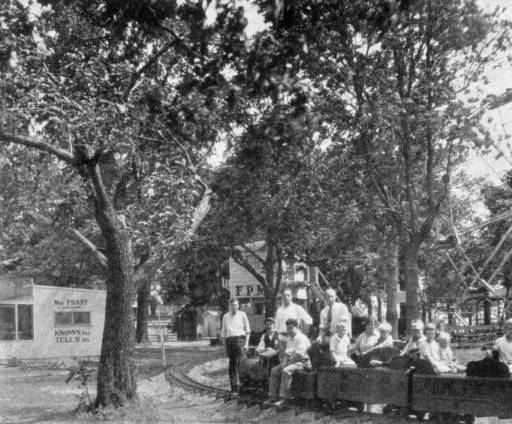
The Lake Shore Electric Interurban tracks (pictured below) ran along Woodville Road, and was a convenient way for thousand to get to Forest Park. Below are the tracks just north of Reiman Road.
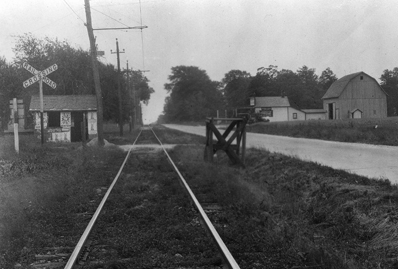
Lake Shore Electric Tracks Along Woodville Road 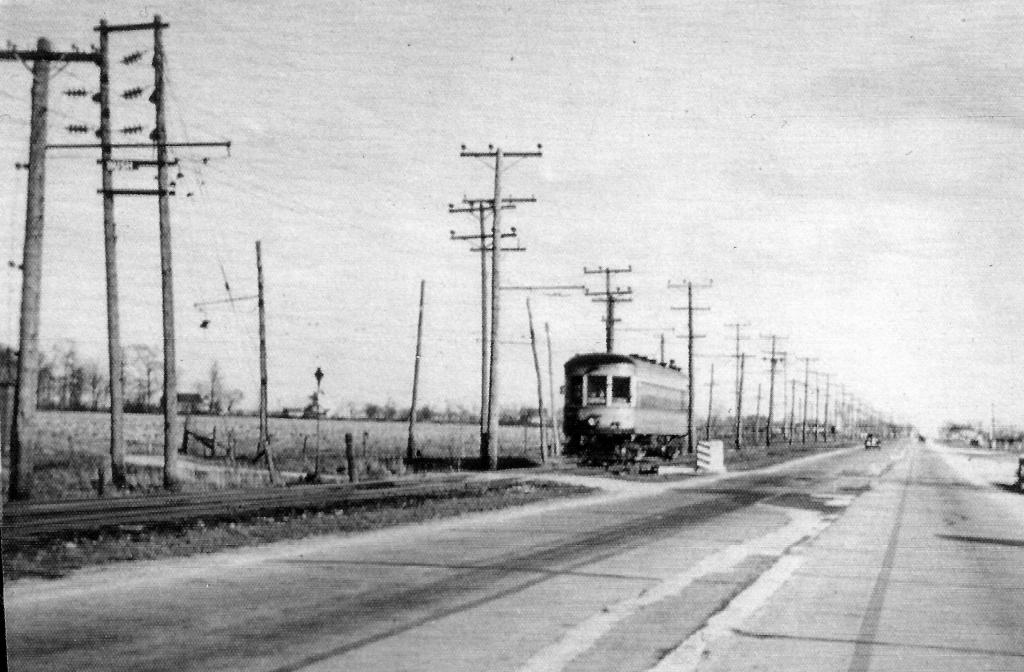
The LSE on Woodville Road
